I wrote this article in Japanese and translated it into English using ChatGPT. I also used ChatGPT to create the English article title. I did my best to correct any translation mistakes, but please let me know if you find any errors. By the way, I did not use ChatGPT when writing the Japanese article. The entire article was written from scratch by me, Saikawa Goto.
Introduction
Movies and books covered in this article

I will write an article about this movie/book
Three takeaways from this article
- What kind of claim exactly is the “Poincaré conjecture,”which is explained as being able to know the shape of the universe?
- “Poincaré conjecture” is important because it gives information on “phases” from “groups”.
- How was the “hurston’s geometrization conjecture,”which includes the “oincaré conjecture,”proven?



While the “Poincaré conjecture” is often took up the Perelman episode, this book will get to the “Poincaré conjecture” itself.
Self-introduction article


Please refer to the self-introduction article above to learn about the person writing this article. Be sure to check out the Kindle book linked below as well.


Published Kindle books(Free on Kindle Unlimited)
“The genius Einstein: An easy-to-understand book about interesting science advances that is not too simple based on his life and discoveries: Theory of Relativity, Cosmology and Quantum Theory”
“Why is “lack of imagination” called “communication skills”?: Japanese-specific”negative” communication”
The quotes in the article were translated using ChatGPT from Japanese books, and are not direct quotes from the foreign language original books, even if they exist.
What is the “Poincaré Conjecture” Proven by Perelman, Who Refused Even Prestigious Awards and 1 Million Dollars?
First, Let’s Talk About Perelman


The theme of the 6th installment of the “Math Girls” series is the notoriously difficult “Poincaré conjecture.” It is one of the seven “millennium prize problems” announced by the Clay Mathematics Institute in 2000, and is the only one that has been solved. It is considered very important in the field of mathematics, and became a hot topic when it was proven by the Russian mathematician Perelman.


First, let’s talk about Perelman. He is one of the top mathematicians in Russia and is known for being extreme misanthropist.


One day, a rumor began to circulate in the world of mathematics. It was that there was a proof of the “Poincaré conjecture” online.
Of course, there had been many claims of “proofs” of the Poincaré conjecture before, but they had all turned out to be false. So when mathematicians heard this rumor, they were skeptical. However, when they found out that the proof was done by Perelman, they were excited. Just this episode can show just how respected a mathematician Perelman was.


After a long period of verification, it was revealed that Perelman’s proof was correct. This means he can now receive a prize of 1 million dollars. Because the “millennium prize problems” offer a 1 million dollar prize for each problem. However, Perelman’s proof was only uploaded to the internet and had not been published in an academic journal. As a result, volunteers summarized his arguments in a paper and moved to publish it in an academic journal on his behalf so that Perelman could obtain the rights.
Furthermore, Perelman also won the Fields Medal. The Fields Medal is known as the Nobel Prize of mathematics (there is no mathematics category in the Nobel Prize), and it is awarded only once every four years, unlike the Nobel Prize. It is a prestigious award that all mathematicians aspire to win.


However, surprisingly, Perelman declined the 1 million dollars prize, furthermore refused the Fields Medal. He is the only mathematician in history to have declined the Fields Medal. There are rumors that he now lives in the forest and hunts mushrooms, but very few people know his whereabouts.
Many mathematicians are strange, but Perelman is one of the strangest.



If you read the book “Perfect Rigor” (Masha Gessen), you can understand that he had various circumstances.




This book deals with the “Poincaré conjecture,” which was solved by such Perelman.
Explaining the “Poincaré Conjecture”
In mathematics, there are famous unsolved problems (or problems that were famous as unsolved). A And among them, there are also problems that “anyone can understand the problem itself.” “Fermat’s Last Theorem” is the most famous example of this. “abc conjecture” and “Goldbach’s conjecture” are also types of problems that are easy to understand the problem itself.




However, the “Poincaré conjecture” is the complete opposite of these types of problems, and the problem itself is extremely difficult to understand.
First of all, let’s try to explain the “Poincaré conjecture” in a mathematically formal description.
Let M be a closed manifold of 3 dimensions. If the fundamental group of M is isomorphic to a trivial group, then M is homeomorphic to the 3-sphere.
I have no idea what you’re talking about.



Even I wouldn’t understand it if it was written like this.


So, let’s get specific about what the “Poincaré conjecture” is all about.


First, imagine this: You are standing on top of an object that is about as big as the Earth, and everything around you is pitch black and you can’t see anything. In this case, how can you determine if the object you’re standing on is shaped like a ball mold or a donut mold?
If it were a small object like building blocks, you could feel its shape by touching it, or if you had a clear view, you could judge its shape even in the case of a big object. But what if you were on top of a large object like the Earth and couldn’t see anything around you? Is there any way to gather information about the object’s shape?
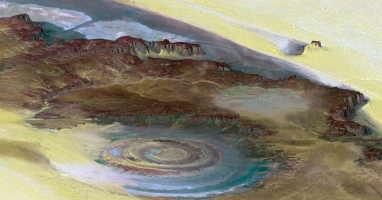

There is actually one way to do it (Not that you can actually do it though). You need a “car with infinite fuel” and an “infinitely long rope”. Tie one end of the rope to the object (let’s say a tree on the object) and the other end to the car. Then, you can drive on the object in any way you like while keeping the rope taut. After you’ve gone on the object for what you think is enough time to have gone on the entire object, you come back to the tree where you first tied the rope.
Both “car with infinite fuel” and “infinitely long rope” don’t exist!



Shut up. This is a “thought experiment”, so you just need to imagine it in your head.


Now, with the rope tied to the tree, remove the one tied to the car, and try pulling the rope with all your might. Since the rope is infinitely long, it will take a lot of time and energy to pull it all in, but please do your best.
Now, what differences will we see whether the object is a “ball mold” and a “donut mold”?
If the object we’re on is a “ball mold,” we should be able to pull the rope back without anything getting caught on it. However, if it’s a “donut mold,” things won’t go so smoothly. Since we’ll be running around in various directions for a long time, we will be sometimes driving the car in a direction that circles around the donut hole. When that happens, no matter how much we try to pull the rope in, we won’t be able to retrieve the rope that circled around the donut hole.


In other words, if you can retrieve the rope, it’s a “ball mold,” and if you can’t, it’s a “donut mold” (Can you picture it?).
Now, let’s think about the same thing in 3 dimensions (a spaca) instead of the 2 dimensions (the object’s surface). For example, we’ll tie a rope to a tree growing on Earth, fly around the entire universe in a spaceship, and then return to Earth after a while and pull the rope towards us (What we are trying to do is no different than the earlier).
At this time, as with the example of the object’s surface earlier, can you understand that whether you can pull the rope or not depends on the shape of the universe? (It is quite difficult to imagine it concretely in our head, so it’s okay to understand it as “if it was like that in 2 dimensions, it should be like that in 3 dimensions.”)


Using this imagery, we can rewrite the “Poincaré conjecture” like this:
If the rope can be pulled back without getting caught, then the universe is shaped like a “3-sphere”


When the “Poincaré conjecture” was proven, it was often explained in the media that we can understand the shape of the universe, based on this analogy. However, in any case, this experiment cannot be done without an infinitely long rope, so whether the “Poincaré conjecture” is proven or not, we cannot know the real shape of the universe. Nevertheless, such metaphors can be said to have the merit of making the rather difficult “Poincaré conjecture” easier to understand.


I kind of understand what the problem is, but I’m also thinking, “So what?”



I’ll try to explain more about that in the next section.
Why is the “Poincaré Conjecture” Important?
I already understood the “Poincaré conjecture” itself roughly before reading this book, but I feel like I only understood why it is important after reading this book. Here, I will try my best to explain my understanding.
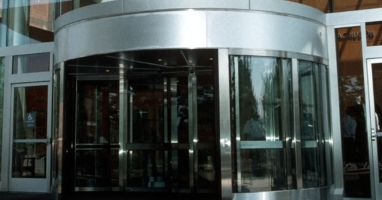

Let’s take a closer look at the difficult description “Poincaré conjecture” that was explained earlier. Let’s write it down again just to be clear.
Let M be a closed manifold of 3 dimensions. If the fundamental group of M is isomorphic to a trivial group, then M is homeomorphic to the 3-sphere.
“Closed manifold of 3 dimensions” means “finite and endless space”. You might not be able to imagine it, but it exists in our daily lives when we think in two dimensions. An example is the surface of the Earth, which has a finite area and does not have a “boundary” no matter how far we go. This property is called “finite and endless space”. The universe we live in can be cited as an example of a “closed manifold of 3 dimensions”.


The “undamental group of M” refers to the “types of ways a rope can be wrapped” if we were to use the example from the previous thought experiment.
For instance, with the “ball mold,” there is only one way to wrap the rope. It doesn’t matter how the rope is wrapped, it can always be recovered, so any way of wrapping it is considered the same.
However, with the “donut mold,” the result changes depending on whether the rope passes through the hole of the donut or not. If it does, the rope cannot be recovered, but if it doesn’t, the rope can be recovered. Therefore, in this case, there are two types of ways to wrap the rope.
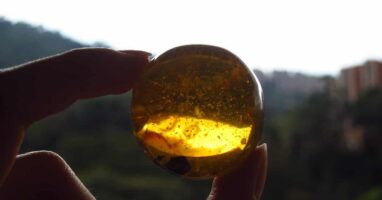

“Trivial group” can be understood as “there is only one way to wind a rope” if we use the same thought experiment as before.
In other words, “Let M be a closed manifold of 3 dimensions. If the fundamental group of M is isomorphic to a trivial group, then M is homeomorphic to the 3-sphere” can be rewritten as follow.


If “M” is a “finite and endless space” and there is only “one type of ways a rope can be rapped,” then “M” can be determined to be a 3-sphere.
I see, breaking it down like this makes it easier to understand, maybe.



Well, I’m ignoring the mathematical rigor, though.
Let’s rewrite a bit more:
If there is only “one type of ways a rope can be rapped,” a “finite and endless space” is 3-sphere.




In other words, this means that we can determine the “nature of space” by the way a rope can be rapped.
Let me explain a little more lightly from here. “Ways a rope can be rapped” is related to something called “group” in the world of mathematics, and “nature of space” is related to “phase”.


The term “phase” is related to a field of mathematics called “topology,” which can be quite difficult to understand. This means that it is difficult to obtain information about “phase” directly. However, if the information about “phase” is related to “group,” then we can know the information about “phase” by knowing about “group.” It’s convenient to have an indirect way to obtain difficult information, isn’t it.
In other word, the reason why this proof is considered important is that by proving the correctness of the “Poincaré conjecture,” it has been confirmed that we can know the “phase” from the “group” information.


Well, there may be no benefit to us regular folks, but knowing the relationship between “group” and “phase” is very important to mathematicians. That’s why it was necessary to prove the “Poincaré conjecture.”
From “Topology” to “Gauss Curvature”
You probably have a rough understanding of the “Poincaré conjecture” now, but this book sets this “Poincaré conjecture” as the “final destination” and depicts various mathematical stories. I can’t cover everything, but let’s take a brief look.
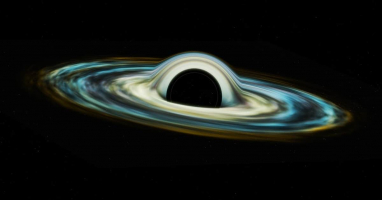

First, I start with “topology,” which begins with the well-known concept of “one-stroke writing” that everyone is familiar with. Through the famous problem of one-stroke writing called “The Seven Bridges of Konigsberg,” which is said to have been the impetus for the birth of topology, we will understand what topology is. Then, I will move on to intoroduction the concept of “homeomorphic” mentioned in the explanation of the “Poincaré conjecture.”
I have ever heard that a “donut” and a “mug with one handle” are the same thing in terms of topology.



That’s right, it’s called “homeomorphic,” but it’s difficult to understand, isn’t it?


From there, I move on to “non-Euclidean geometry.” This is a topic that appears quite often in popular math books, and of course there were many things that I already knew. However, I have never read a description that was written in as much detail as this book before. It was full of exciting topics, such as the story of the “prophetic discovery of Saccheri” and experiencing non-Euclidean geometry through the “Poincaré disk model.”


The flow from “Spherical trigonometry” to “Gauss curvature” was also very interesting. “Spherical trigonometry” refers to “triangles drawn on a sphere.” You can think of it as choosing three city names on Earth (such as “Tokyo,” “New York,” and “Paris”) and connecting those three points to form a triangle.


Of course, this “Spherical trigonometry” is curved compared to a regular triangle. That’s because space is curved. In other words, if youwe understand how “Spherical trigonometry” is curved, we can understand how much space is curved (which is obvious, right?). And it is explained that the “curvature of space (= Gauss curvature)” can be derived in the process of finding the area of “Spherical trigonometry”.
Now, here’s where it gets interesting: Gauss proved that “Gauss curvature,” which is defined as an “extrinsic quantity,” can also be expressed as an “intrinsic quantity.” This is pretty amazing, but it’s a little hard to understand, isn’t it?


Please imagine a “2-dimensional creature” here. It’s like sticking to the surface of the Earth and not being able to jump or float (although such a creature doesn’t actually exist). Can this creature know how much the surface it is on is curved?
You might think that “how much it is curved” is something that can only be known by observing the object from the outside (i.e., extrinsic quantity), so a “2-dimensional creature” that cannot leave the surface of the object may not know it. However, “Gauss curvature” can also be defined as an “intrinsic quantity”. In other words, it means that “it can be derived without knowing the ‘information that can only be known by observing the object from the outside’.”
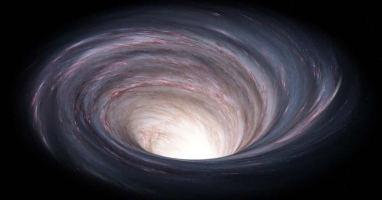

The “2D creature” mentioned earlier can determine the “Gauss curvature” of the surface it is on from the limited information available to it. Gauss called this an “astonishing theorem.”
If so, can 2D anime characters recognize 3D fans?



But that’s not the point.
The Important Things Here are the “Thurston’s Geometrization Conjecture” and the “Ricci Flow Equation”


After going through this process, we finally arrive at the “final destination,” the “Poincaré conjecture.” However, there is an important notice to be made here. It is that everyone who attempted to prove the “Poincaré conjecture” (including Perelman, who eventually proved it) did not try to prove it directly.
In fact, there was a bigger conjecture called “Thurston’s geometrization conjecture,” which included the “Poincaré conjecture.” In other words, if the “Thurston’s geometrization conjecture” can be proven, then it automatically means that the “Poincaré conjecture” is also proven.


Let me first explain what “Thurston’s geometrization conjecture” is and the situation surrounding it.
“Thurston’s geometrization conjecture” is a conjecture about “closed manifold of 3 dimensions”. It’s a word that also appeared in the explanation of the “Poincaré conjecture”. Poincaré said, “If there is only “one type of ways a rope can be rapped,” the “universe” is 3-sphere.” However, for a space called “closed manifold of 3 dimensions”, there are other possibilities to consider besides the 3-sphere. That’s why Thurston thought, “So, what other shapes besides the 3-sphere could exist?” And he conjectured that all “closed manifold of 3 dimensions” would be combinations of “8 basic manifolds”.
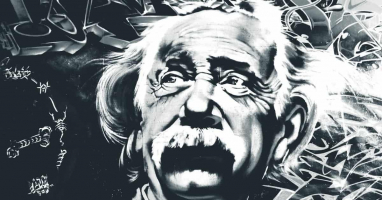

What does this mean?


Imagine something like a Lego block that has only 8 basic pieces. With these Lego block-like things, we can create an infinite variety of shapes. However, if we break down what we’ve created into individual pieces, we’ll find that there are only 8 basic pieces. Similarly, “Thurston’s geometrization conjecture” suggests that various shapes of “closed manifold of 3 dimensions” are created by combining “8 basic manifolds.”
So why does proving “Thurston’s geometrization conjecture” mean proving the “Poincaré conjecture?” Well, Thurston has also identified the “8 basic manifolds,” and among those 8, it is known that only the “3-sphere” is a “manifold with only one way a rope can be rapped.”


So, if “Thurston’s geometrization conjecture” is proven, we can understand as follow.
If “the way a rope can be rapped is one type,” then the “finite and endless space is only 3-sphere.”
This means that we can also prove the “Poincaré conjecture.”


But I’m wondering, is “Thurston’s geometrization conjecture” easier than “Poincaré conjecture”?



Well, when you ask me that, I’m not really sure.
Now, to prove the “Poincaré conjecture,” another powerful weapon was needed, which was the “Ricci flow equation.” This equation, created by a mathematician named Hamilton by applying the “thermodynamic equation” in physics, was the key to conquering the “Poincaré conjecture,” and Perelman used this method to complete the final piece.


Mathematics, like any other field, praises the person who “fills the final piece of the proof” as the one who “achieved the proof.” However, even for Perelman, he could not have completed the proof of the “Poincaré conjecture” without “Thurston’s geometrization conjecture” and “Ricci flow equation.” I think that more people should be evaluated, but in the world of research, not only in mathematics, it feels like “one person (or one group) that should be praised” must be determined, so it is quite difficult.
And to the Proof of “Poincaré Conjecture”
Now, let’s take a look the last part at how the “Thurston’s geometrization conjecture” was proven.


First of all, Hamilton, who developed a tool called the “Ricci flow equation,” proved the “Thurston’s geometrization conjecture” under the condition of “positive Ricci.” However, he couldn’t prove it without the condition of “positive Ricci.” It’s like saying, “I can ride a bike with training wheels, but I’ll fall over without them.” In other word, the person who proves that they can ride a bike without training wheels is the winner.


Now, of course, Hamilton attempted to prove the “Thurston’s geometrization conjecture” without the condition of “positive Ricci.” However, he faced a big problem called “cigar singularity” in the process. In other words, Hamilton brought the proof to the point where “everything would be solved except for the cigar singularity problem that arises when he considers the Thurston’s geometrization conjecture without the condition of positive Ricci.”


By this point, it should be easy to understand what Perelman did. He confronted the “cigar singularity” under the condition of “positive Ricci”.
It may seem like that’s all he did.



But it was probably incredibly difficult.
Then, by making improvements called “surgery” to the “Ricci flow equation”, Perelman succeeded in proving that “under the condition of positive Ricci, cigar singularities do not appear”.


And thus, the proof of “Thurston’s geometrization conjecture” confirms the correctness of the “Poincaré conjecture.” That’s how it all unfolds.
Did you understand it to some extent?


Conclusion
Despite the high level of mathematical description, this series does a great job of taking the reader along and making it somewhat understandable if they try hard enough. However, even in the “Math Girls” series, I felt there were few direct descriptions of the Poincaré conjecture, which made me realize once again that it is a difficult problem that even the “Math Girls” struggle to tackle.


Published Kindle books(Free on Kindle Unlimited)
“The genius Einstein: An easy-to-understand book about interesting science advances that is not too simple based on his life and discoveries: Theory of Relativity, Cosmology and Quantum Theory”
“Why is “lack of imagination” called “communication skills”?: Japanese-specific”negative” communication”







コメント